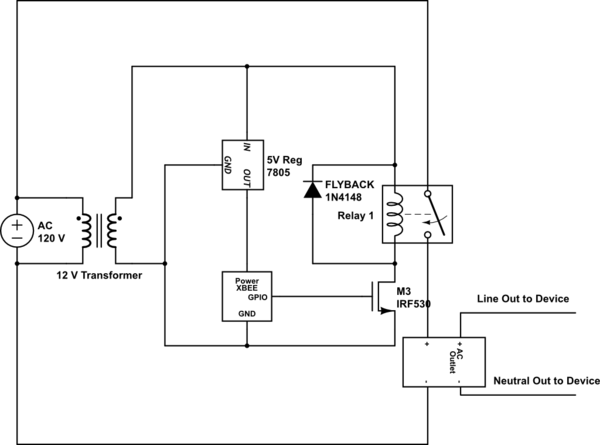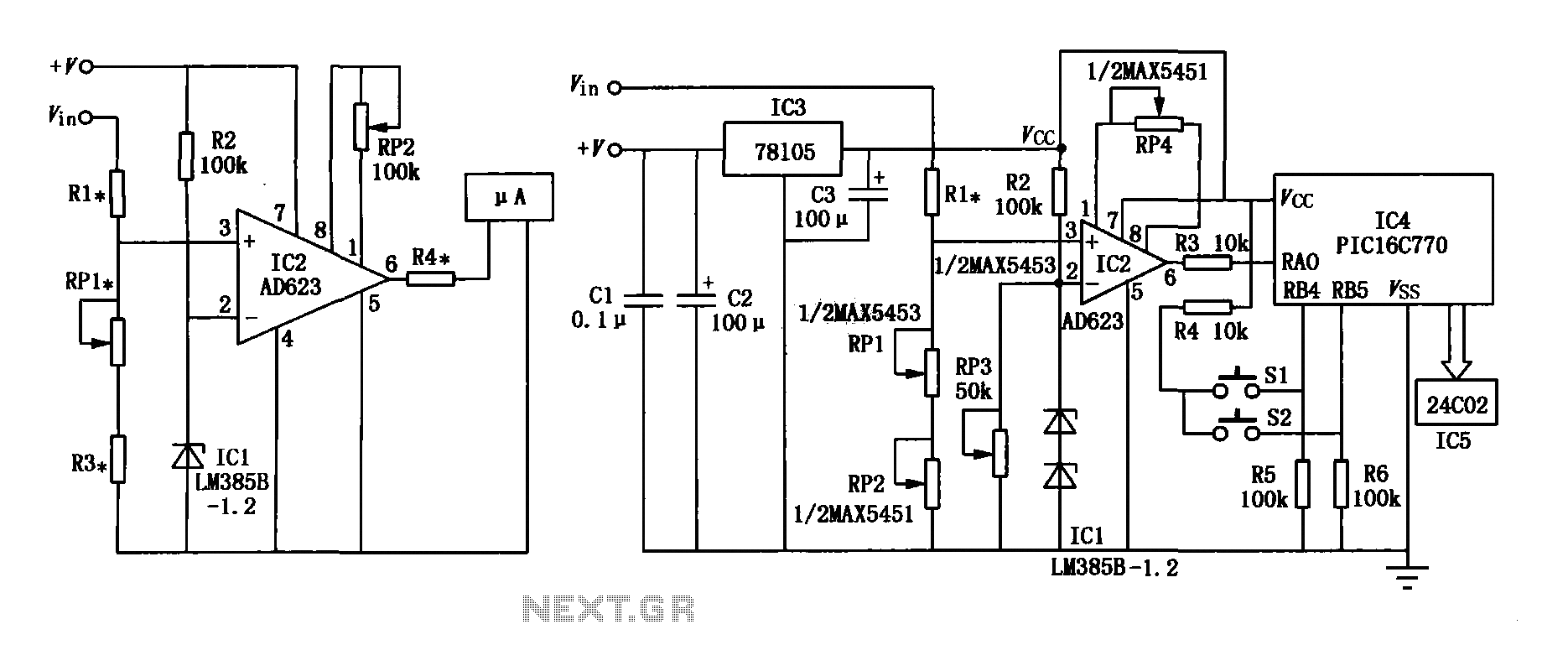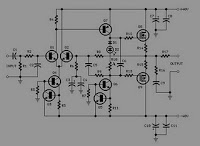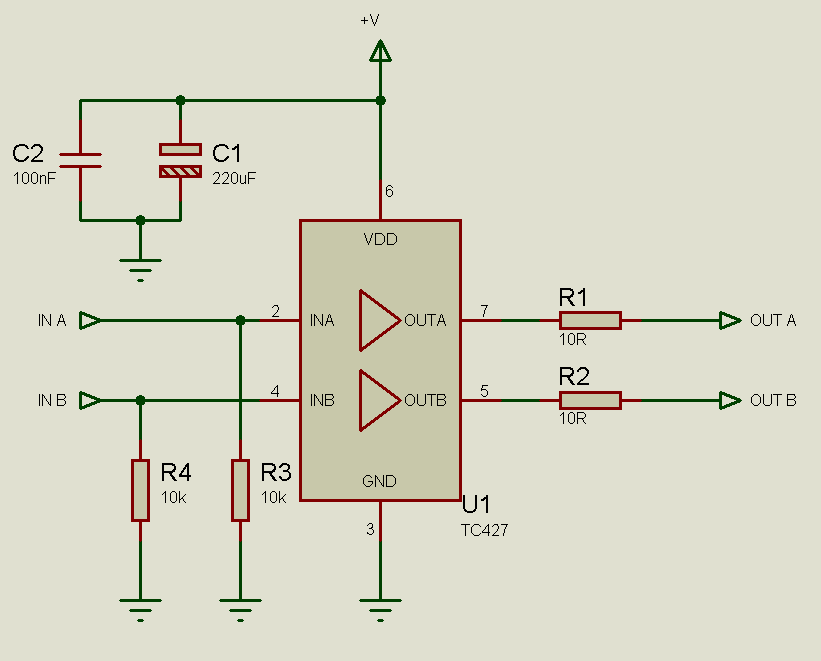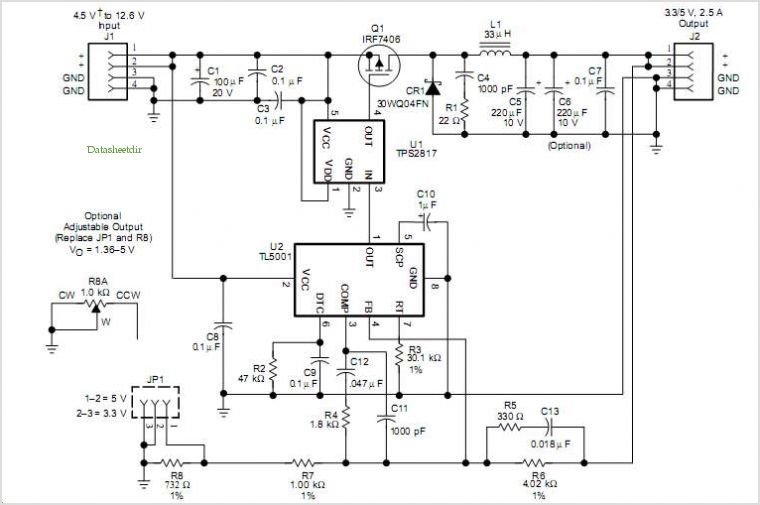
FET VOLTMETER
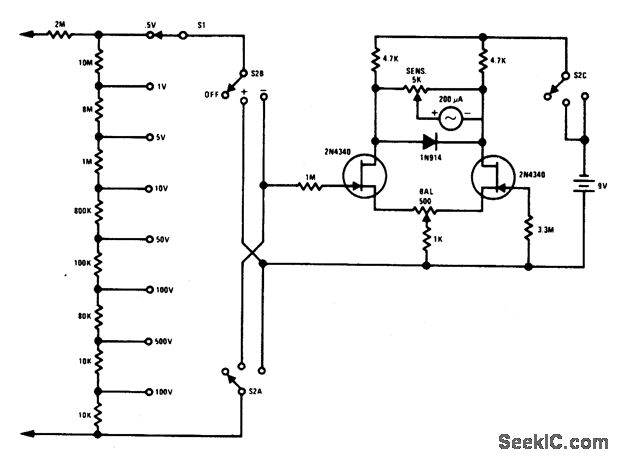
The FETVM serves as a replacement for the VTVM, eliminating the need for a conventional line cord. It features significantly improved drift rates compared to vacuum tube circuits, enabling a full-scale range of 0.5 volts, which is typically unfeasible with most vacuum tubes. The low-leakage, low-noise 2N4340 transistor is particularly well-suited for this application.
The FETVM (Field Effect Transistor Voltmeter) incorporates advanced semiconductor technology to enhance measurement accuracy and stability. The removal of the line cord simplifies the design and improves portability, making it suitable for various applications in electronics testing and troubleshooting. The use of the 2N4340 transistor, known for its minimal leakage current and low noise characteristics, contributes to the overall performance of the device.
The circuit typically includes a high-impedance input stage that utilizes the 2N4340 to amplify the input voltage without introducing significant noise or distortion. The output stage may employ additional amplification or signal conditioning circuits to ensure that the measured voltage can be accurately displayed or recorded.
Drift rates in the FETVM are significantly lower than those found in traditional vacuum tube voltmeters, allowing for more reliable long-term measurements. This feature is particularly beneficial for applications that require precise voltage readings over extended periods. The design may also incorporate temperature compensation techniques to further enhance stability and accuracy.
Overall, the FETVM represents a significant advancement in voltmeter technology, offering improved performance and convenience over its vacuum tube predecessors. It is well-suited for use in laboratories, fieldwork, and any application where accurate voltage measurement is critical.This FETVM replaces the function of the VTVM while at the same time ridding the in-strument of the usual line cord. In addition, drift rates are far superior to vacuum tube circuits allowing a 0. 5 volt full scale range which is impractical with most vacuum tubes. The low-leakage, low-noise 2N4340 is an ideal device for this application. 🔗 External reference
The FETVM (Field Effect Transistor Voltmeter) incorporates advanced semiconductor technology to enhance measurement accuracy and stability. The removal of the line cord simplifies the design and improves portability, making it suitable for various applications in electronics testing and troubleshooting. The use of the 2N4340 transistor, known for its minimal leakage current and low noise characteristics, contributes to the overall performance of the device.
The circuit typically includes a high-impedance input stage that utilizes the 2N4340 to amplify the input voltage without introducing significant noise or distortion. The output stage may employ additional amplification or signal conditioning circuits to ensure that the measured voltage can be accurately displayed or recorded.
Drift rates in the FETVM are significantly lower than those found in traditional vacuum tube voltmeters, allowing for more reliable long-term measurements. This feature is particularly beneficial for applications that require precise voltage readings over extended periods. The design may also incorporate temperature compensation techniques to further enhance stability and accuracy.
Overall, the FETVM represents a significant advancement in voltmeter technology, offering improved performance and convenience over its vacuum tube predecessors. It is well-suited for use in laboratories, fieldwork, and any application where accurate voltage measurement is critical.This FETVM replaces the function of the VTVM while at the same time ridding the in-strument of the usual line cord. In addition, drift rates are far superior to vacuum tube circuits allowing a 0. 5 volt full scale range which is impractical with most vacuum tubes. The low-leakage, low-noise 2N4340 is an ideal device for this application. 🔗 External reference
